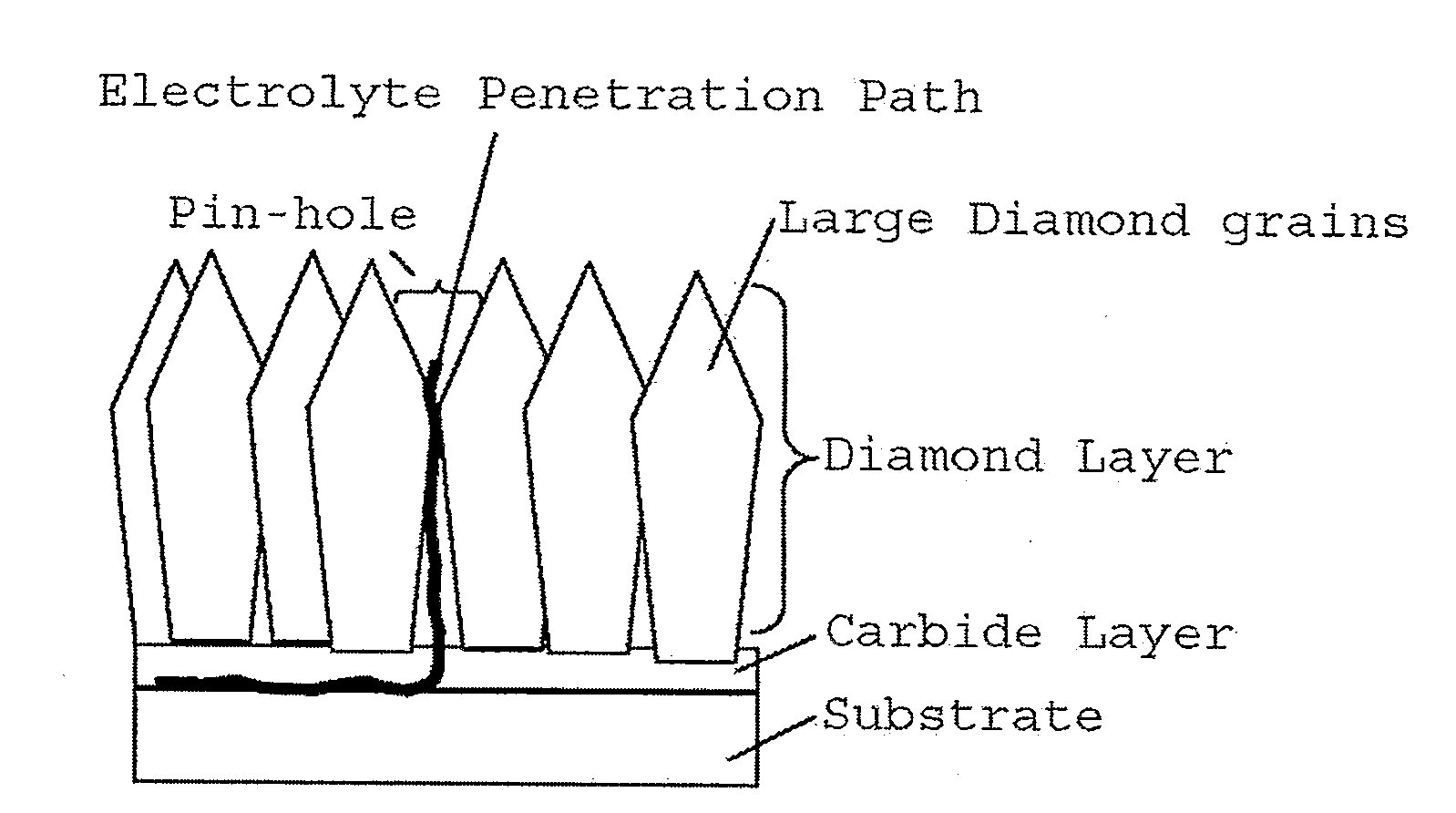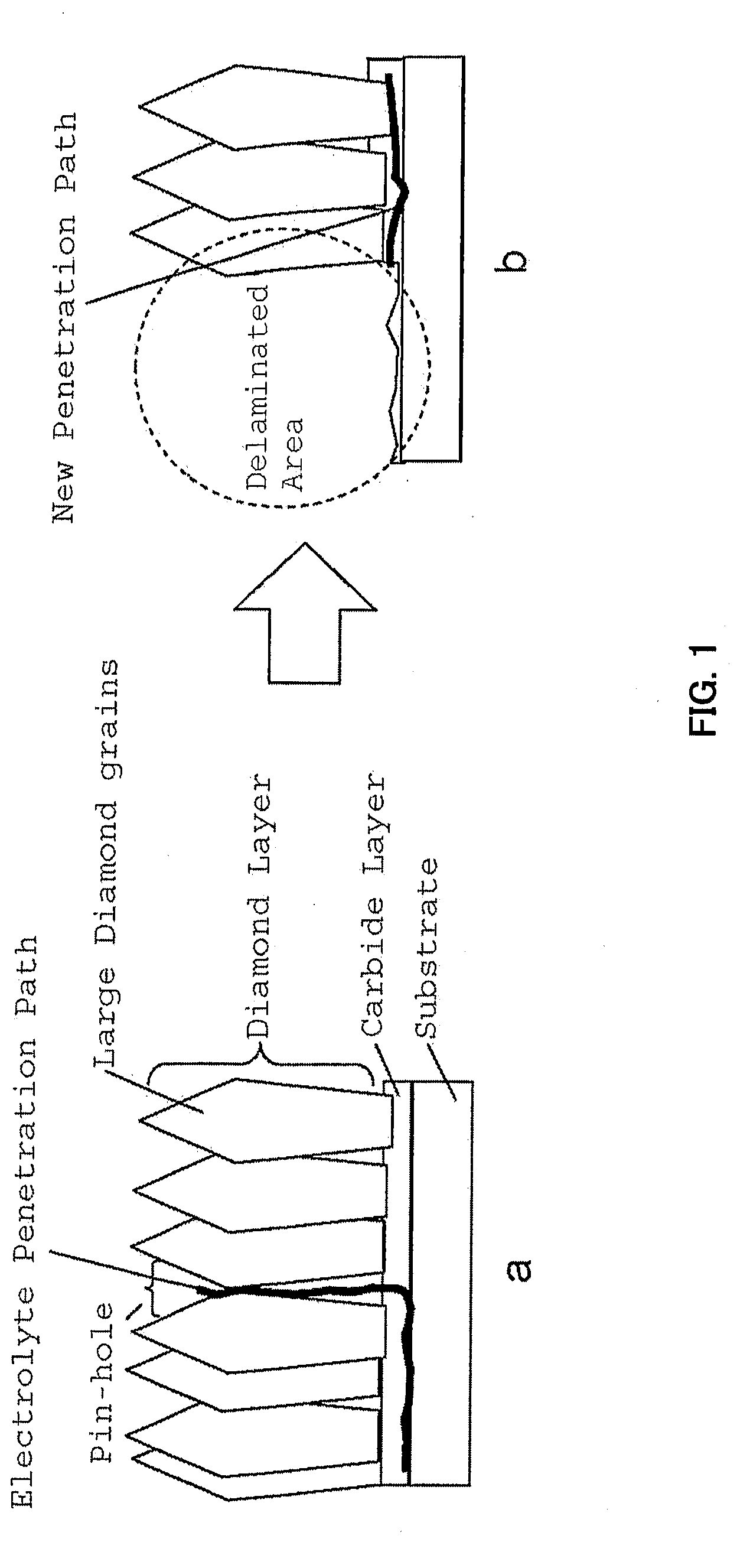Method for production of diamond electrodes
- Summary
- Abstract
- Description
- Claims
- Application Information
AI Technical Summary
Benefits of technology
Problems solved by technology
Method used
Image
Examples
example 1
[0051]The surface of titanium plate (40×60×4t) was pretreated by sand-blasting using SiC powder as the blasting material. The sand-blasted titanium plate after washing with distilled water, was immersed in an ultra-sonic bath containing aqueous ethanol solution and seed diamond with diameter around 5 nm. The substrate material was treated in this ultrasonic-bath for 10 h. After drying, the substrate material was placed inside the HF-CVD chamber and coated at 6 mBar and at the condition illustrated in TABLE 1 for 20 h.
[0052]The produced electrode had a diamond layer of 1.35 μm. FIG. 5 illustrates a SEM picture of the diamond electrode surface produced in EXAMPLE 1. As can be seen, the grains of diamond crystal are very small and this is due to fact that this electrode was coated at CVD pressure of 6 mBar. The grain sizes are lower than one micrometer, which can be confirmed by the reference bar of 2 μm illustrated in FIG. 5. Comparing with FIG. 4 where the coating was performed at CV...
example 2
[0059]The surface of titanium plate (40×60×4t) was pretreated by sand-blasting using SiC powder as the blasting material. The sand blasted titanium plate, after washing with distilled water, was immersed in an ultra-sonic bath containing aqueous ethanol solution and seed diamond with diameter around 5 nm. The substrate material was treated in this ultrasonic-bath for 10 h. After drying, the substrate material was placed inside the HF-CVD chamber and coated at 15 mBar and at the condition illustrated in TABLE 1 for 20 h in total. Here, the electrode was coated by 10 h using methane concentration of 1.3% and at the following 10 h the methane was changed to 0.8%.
[0060]The produced electrode had a diamond layer of 1.7 μm. The Raman quality of the produced layer was 78.5% showing that the decrease in methane concentration during the CVD coating can increase the Raman quality. The grain sizes were lower than one micrometer, with an average size of 700 nm confirmed by SEM and AFM analysis....
PUM
| Property | Measurement | Unit |
|---|---|---|
| Grain size | aaaaa | aaaaa |
| Fraction | aaaaa | aaaaa |
| Fraction | aaaaa | aaaaa |
Abstract
Description
Claims
Application Information
 Login to View More
Login to View More - R&D
- Intellectual Property
- Life Sciences
- Materials
- Tech Scout
- Unparalleled Data Quality
- Higher Quality Content
- 60% Fewer Hallucinations
Browse by: Latest US Patents, China's latest patents, Technical Efficacy Thesaurus, Application Domain, Technology Topic, Popular Technical Reports.
© 2025 PatSnap. All rights reserved.Legal|Privacy policy|Modern Slavery Act Transparency Statement|Sitemap|About US| Contact US: help@patsnap.com



